A detailed writing rubric is worth its weight in gold!
(Actually…maybe it’s worth a lot more than that, because a sheet of paper doesn’t weigh very much. ?)
But anyway…you get what I’m saying! Detailed writing rubrics are very valuable, because they a) help us get a clear picture of how students are doing (much more helpful than a simple “A” or “B” grade!) AND b) they help us adapt and shape our instruction.
In last week’s post, I shared my assessment plan for each writing workshop unit that I teach.
But in that post, I didn’t explain how I use rubrics to guide my writing instruction!
So in today’s post, I explain how I use detailed genre rubrics to make decisions about my whole group, small group, and individual writing instruction. I’ve also included a quick video to help walk you through my thinking!
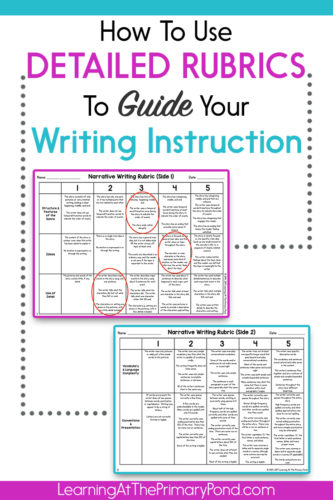
How I Use Rubrics to Guide My Writing Instruction
As I mentioned in last week’s post on assessment (definitely check it out if you haven’t yet — click HERE), I use a genre rubric, like the one you’ll see in the video below, 3 times a year with 1st grade and up.
This thought process can be applied to any rubric, however. Watch the video below to hear how I analyze data from a 1st grade narrative writing rubric!
The Bullet Points
Here’s some of what I shared in the video:
- Rubrics can be used as formal assessment, but it also makes sense to use them BEFORE instruction to guide your teaching during a unit.
- Rubrics that have a wide range (i.e. 1-5) are the most helpful. A score of 4 is the goal, but as you can see, the rubric goes beyond that so that you can accurately assess more advanced students and understand how to move them beyond simply meeting expectations. (Same goes for lower students.)
- Look among students’ rubric scores to find patterns. If there is an area of weakness for 50% or more of your students, address it in whole group. If a handful of students need to work on something, plan small group lessons. If just one or two students need to work on something, address it individually.
- Although it’s tempting to constantly look ahead on the rubric to see what to teach next, remember that students may still need to spend time solidifying skills that fall under their current score on the rubric.
- Know your limits. I’m a specialist and work with kids one-on-one or in small groups, so I can spend time analyzing each child’s needs as a writer/reader. If you have an entire classroom, however, it’s not feasible to try to work on every single aspect of the rubric with each student individually. Set one individual goal per student, and try to address as many things as you can in whole or small group.
Questions about any of this? Leave me a comment! And if you’re wondering how to get rubrics like these, you can check out my kindergarten, 1st, or 2nd grade writing units:
I also have the genre rubrics available separately:
Happy teaching!

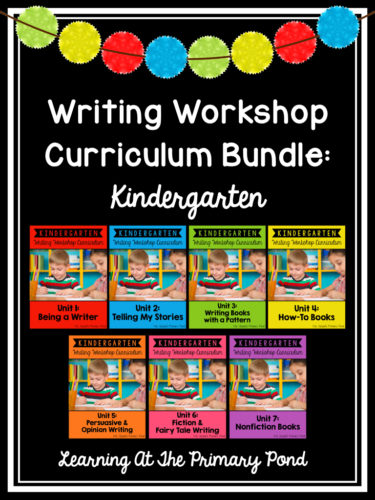
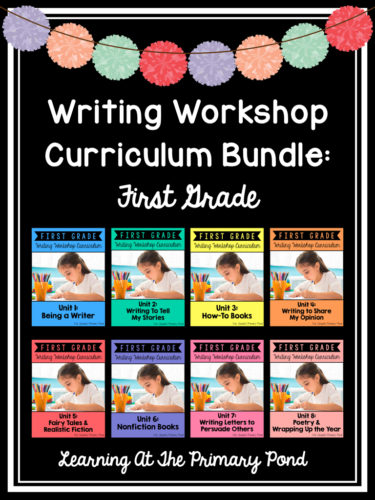
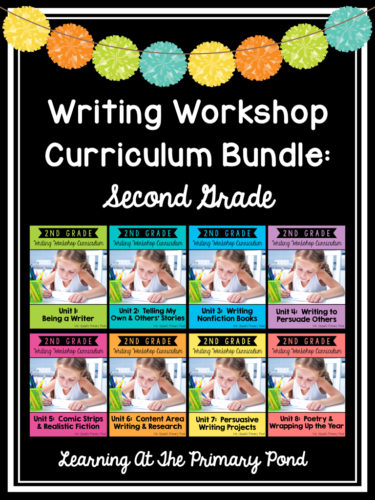
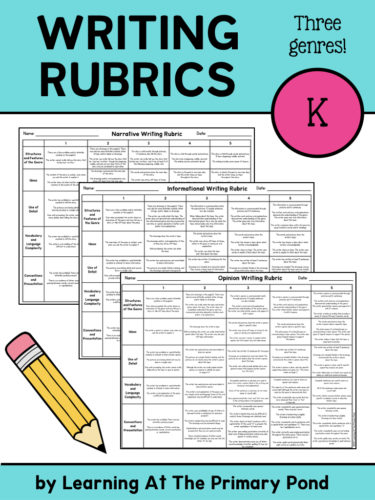
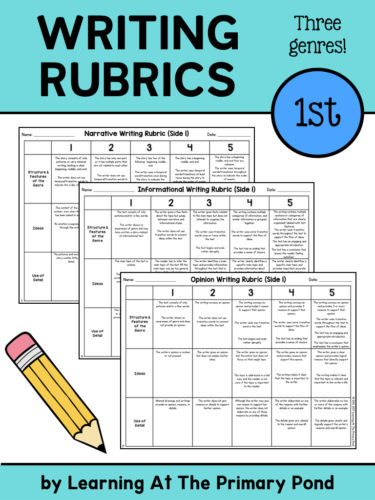
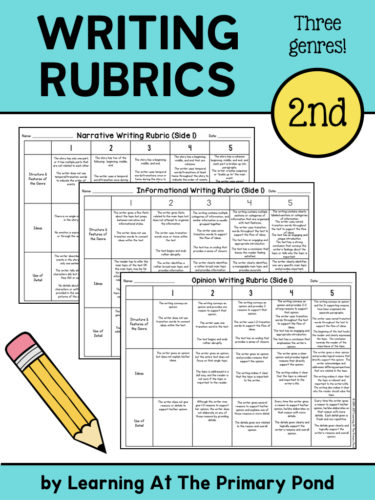
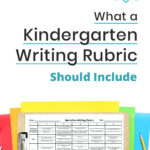
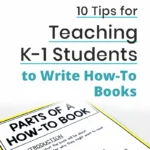
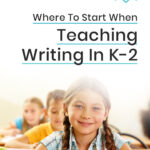
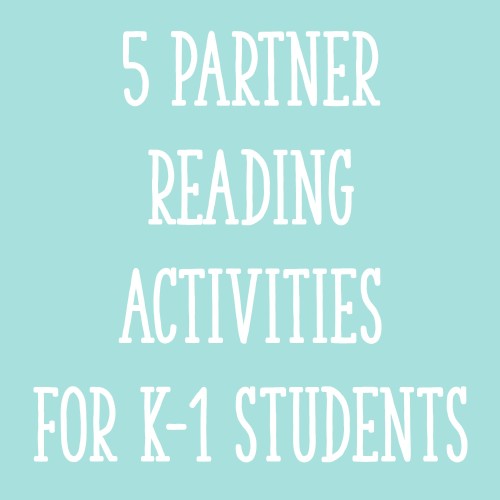

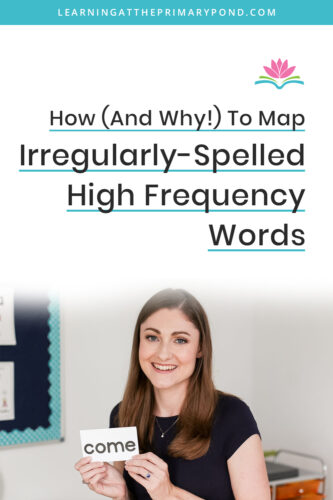






I purchased your 1st grade WW curriculum. We are almost at the end of Unit 1 – my kids are loving it! I’ve never been good at rubrics, conferring and organizing WW materials. Do you have tips on any of this? How do you store all the conferring sheets so you can easily access for conferring? What about scoring with rubrics? Do you score each piece for a whole class? And how do you track the goals they are all working on? Feeling slightly overwhelmed but in a good way!
Hi Stefanie! So glad the kids have been loving it so far! I think this post might help with assessment and organization: https://learningattheprimarypond.com/writing/writing-assessments-for-writing-workshop/
I typically only score 1, maybe 2 pieces per unit for the whole class. I hope this helps!
Alison
Hello,
I love your work! I would like to find some tong similar for grades 3-5. Do you have colleagues that continued your work into 3-5? We are looking for a whole school approach.
thanks!
Thank you for your kind words!! I’m sorry to say that I don’t know of anyone who has done something similar for grades 3-5 🙁